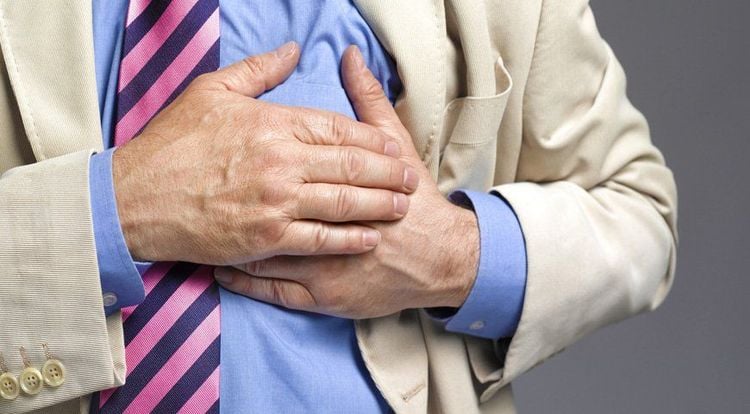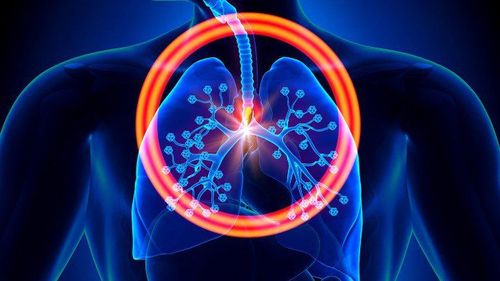This is an automatically translated article.
The article was professionally consulted by a Doctor of Cardiology - Thoracic Surgery, Vinmec Central Park International General Hospital.The thoracic area is home to many important organs in the body, so when there is angina on the right or left side, the patient should absolutely not be subjective because it can be a warning sign. dangerous disease.
1. An overview of angina pectoris
Angina includes right angina pectoris and left angina pectoris, is a condition in which the patient has pain in the chest area accompanied by a feeling of shortness of breath, the more exertion, the more the pain increases, the expression will decrease when The patient is well rested.Depending on the nature and manifestations of the patient to determine the cause of angina:
May be due to insufficiency of the yellow vessels or myocardial infarction (the most dangerous form of angina); Because the organs (large intestine, small intestine, liver, stomach, spleen, pancreas, kidney ...) are located close to the chest, problems can also affect the rib cage and cause seizures. angina; Due to thoracic trauma causing angina or intercostal neuralgia; Because the patient has diseases of the upper gastrointestinal system; Angina left - right can also be affected by acute stomach pain, this cause will be accompanied by manifestations of stomach disease; Angina can also be caused by a diaphragmatic abscess. In addition to the clinical manifestations, the cause of angina will be accurately diagnosed through laboratory and imaging tests such as ultrasound, electrocardiogram, X-ray, chest MRI or CT. -scan....
Trắc nghiệm: Bạn có hiểu đúng về huyết áp cao không?
Huyết áp cao còn được gọi là kẻ giết người thầm lặng vì bệnh thường không có triệu chứng. Thiếu hụt kiến thức về huyết áp cao có thể làm cho tình trạng bệnh trở nên trầm trọng hơn. Dưới đây là những câu hỏi trắc nghiệm vui giúp bạn hiểu đúng về bệnh cao huyết áp.2. What disease is angina related to?
Angina left - right is a disease that can be caused by many causes, with each different cause, the symptoms shown on the patient's body are also different. Angina pectoris can be related to a number of diseases such as:2.1 Angina due to intercostal neuritis When angina due to intercostal neuritis, the patient has an injury to the intercostal nerve (inserted) pressed, inflamed, caused by a virus...). Usually, this angina usually occurs with people who exercise, play sports too hard, do not use the right method... If the patient does not have a direct injury, the pain will spread in groups. muscle and will heal on its own with proper rest.

Đau thắt ngực có thể do nhiều nguyên nhân
2.2 Angina due to myocardial infarction If the cause is a heart attack, the patient will have left angina pectoris, the pain will spread to the left arm and accompanied by fatigue, heart palpitations For patients with cardiovascular disease or a history of high blood pressure, when experiencing angina, they should immediately think of the possibility of a heart attack and need to be treated promptly. .
These cases need to pay special attention to their own health, have regular health checkups and maintain a healthy weight.
2.3 Angina due to pneumothorax In many cases, pneumothorax also causes angina on the right or left side, this pain will not spread but is accompanied by a feeling of little or no shortness of breath. varies depending on whether the pneumothorax is localized or total.
When having angina due to pneumothorax, the patient should have a straight and inclined chest X-ray test to determine if there is a tumor of the lung or mediastinum.
2.4 Angina due to thoracic aortic dissection Aneurysm dissection of the thoracic aorta also causes severe left angina pain, the patient will now feel a sharp pain like a knife stabbing in the chest, accompanied by hemodynamic disturbances, which can cause blood pressure to decrease or increase, pulse tachycardia, sweating.
This disease often occurs in people with a history of high blood pressure, obesity, smoking. If no specific diagnosis is made, it may be confused with angina due to acute myocardial infarction.
2.5 Right chest pain due to lung cancer Right chest pain is very common in young and old people, due to many causes, but if the pain is deep in the lungs, it is often accompanied by a feeling of shortness of breath, labored breathing, persistent cough, pain in the hands, pain in the joints of the toes, fingers, cough with blood ... then be alert because it can be a warning sign of lung cancer.
As soon as these symptoms appear, the patient should not be subjective but visit the doctor immediately for an accurate diagnosis and timely treatment.

Đau tức ngực bên phải kèm theo khó thở có thể do nguyên nhân ung thư phổi
3. What to do when you have angina?
As soon as there are signs of angina left - right, the patient needs to be examined as soon as possible to find out the cause of the disease. Once the cause is known, it will be necessary to actively treat it according to the doctor's instructions. For patients with angina pectoris related to the heart, it is necessary to be very careful, in addition to using vasodilators to treat, it is necessary to have a reasonable diet, living, and avoid strong emotions.A special thing to note for patients with left - right angina is that when the pain is in the working state, they must rest immediately, absolutely do not exert themselves. You should exercise gently every day to help your body stay flexible.
For people with diabetes, hypertension, hyperlipidemia, intercostal neuralgia and respiratory diseases (bronchitis, asthma, chronic bronchiectasis...) it is necessary to take medicine regularly and abstinence according to the doctor's instructions.
Please dial HOTLINE for more information or register for an appointment HERE. Download MyVinmec app to make appointments faster and to manage your bookings easily.













